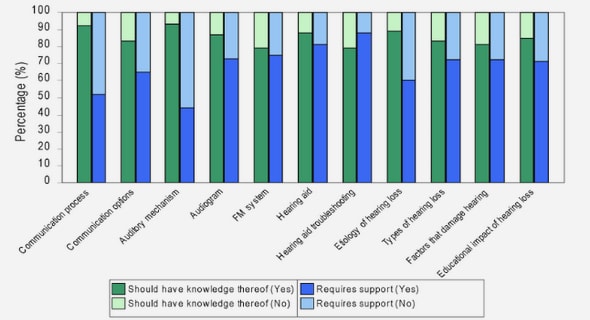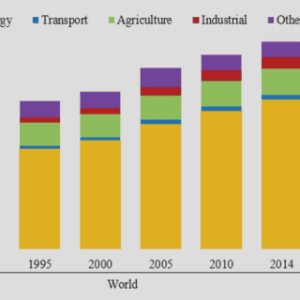(Downloads - 0)
For more info about our services contact : help@bestpfe.com
Table of contents
1. Articles published
2. International Conferences
I. Chapter 1: Introduction
I.1 Context
I.2 State of art
I.2.1 Remote sensing data for soil characterization
I.2.2 Potential of radar data for monitoring soil conditions
I.3 Plan of the thesis
II. Chapter 2: Generalities
II.1 Introduction
II.2 Radar remote sensing
II.2.1 Instrumental Parameters
II.2.1.1 Radar frequency
II.2.1.2 Polarization
II.2.1.3 Incidence angle
II.2.2 Radar backscattering coefficient
II.3 Description of soil parameters
II.3.1 Soil moisture
II.3.2 In situ measurements
II.3.2.1 The gravimetric method
II.3.2.2 The TDR (Time Domain Reflectometry)
II.3.3 Surface roughness
II.4 Radar signal sensitivity to soil parameters
II.4.1 Sensitivity of radar signal to soil roughness
II.4.2 Sensitivity of the radar signal to soil moisture
II.5 SAR data processing
II.6 Radar backscattering modeling and evaluation
II.6.1 Case of bare soil
II.6.1.1 Modeling of radar backscattering on bare soils
II.6.1.2 Estimation of soil parameters using radar backscattering on bare soils
II.6.2 Case of soil with vegetation cover
II.7 Conclusion
III. Chapter 3: Evaluation of radar backscattering models
III.1 Introduction
III.2 Dataset
III.2.1 Study Areas
III.2.2 Satellite Data
III.2.3 Field Data
III.2.4 Soil texture
III.3 Description of the Backscattering Models
III.3.1 The Semi-Empirical Dubois Model
III.3.2 The Semi-Empirical Oh Model
III.3.3 The Physical Integral Equation Model (IEM)
III.3.4 IEM Modified by Baghdadi (IEM_B)
III.3.5 The Advanced Integral Equation Model
III.4 Results and Discussion
III.4.1 Evaluation of the Dubois Model
III.4.2 Evaluation of the Oh Model
III.4.3 Evaluation of the IEM
III.4.4 Evaluation of IEM Modified by Baghdadi (IEM_B)
III.4.5 Evaluation of the Advanced Integral Equation Model (AIEM)
III.5 Conclusions
IV. Chapter 4: A New Empirical Model for Radar Scattering from Bare Soil Surfaces
IV.1 Introduction
IV.2 Dataset description
IV.3 Validation and analysis of the Dubois model
IV.3.1 Description of Dubois model
IV.3.2 Comparison between simulated and real data
IV.4 New empirical model
IV.4.1 Methodology
IV.4.2 Comparison between Dubois model and new model
IV.4.3 Results and discussion
IV.4.3.1 Performance of the new model
IV.4.3.2 Behaviour of the new model
IV.5 Conclusion
V. Chapter 5: Estimation of soil roughness using neural networks from sentinel-1 SAR data
V.1 Introduction
V.2 Dataset
V.2.1 Synthetic dataset
V.2.2 Real dataset
V.2.2.1 Study sites
V.2.2.2 . SAR Satellite images
V.2.2.3 In situ measurements
V.3 Methodology for estimating soil moisture
V.3.1 Neural Networks
V.3.2 Methodological overview
V.4 Results and discussion
V.4.1 Synthetic dataset
V.4.1.1 Estimation of mv
V.4.1.1.1 Using the IEM model
V.4.1.1.1.1 Use of VV polarization alone
V.4.1.1.1.2 Use of VH polarization alone
V.4.1.1.1.3 Use of VV and VH polarizations together
V.4.1.1.2 Using Baghdadi model
V.4.1.1.2.1 Use of VV polarization alone
V.4.1.1.2.2 Use of VH polarization alone
V.4.1.1.2.3 Use of VV and VH polarizations together
V.4.1.1.3 Conclusion
V.4.1.2 Estimation of Hrms
V.4.1.2.1 Using IEM model
V.4.1.2.2 Using Baghdadi model
V.4.2 Real dataset
V.4.2.1 Estimation of soil moisture (mv)
V.4.2.1.1 Using the IEM model
V.4.2.1.2 Using Baghdadi model
V.4.2.2 Estimation of surface roughness (Hrms)
V.4.2.2.1 Using the IEM model
V.4.2.2.2 Using Baghdadi model
V.4.2.2.3 Discussion
V.4.3 Estimation of Hrms and mv both at very high spatial resolution ʺVHSRʺ
V.4.3.1 Synthetic dataset
V.4.3.1.1 Estimation of mv
V.4.3.1.1.1 Using the IEM model
V.4.3.1.1.2 Using Baghdadi model
V.4.3.1.1.3 Discussion
V.4.3.1.2 Estimation of soil roughness ʺHrmsʺ
V.4.3.1.2.1 Using the IEM model
V.4.3.1.2.2 Using Baghdadi model
V.4.3.1.2.3 Discussion
V.4.3.2 Real dataset
V.4.3.2.1 Estimation of soil moisture (mv)
V.4.3.2.1.1 Using the IEM model
V.4.3.2.1.2 Using Baghdadi model
V.4.3.2.2 Estimation of surface roughness (Hrms)
V.4.3.2.2.1 Using the IEM model
V.4.3.2.2.2 Using Baghdadi model
V.5 Conclusions
VI. General conclusion and perspectives
VI.1 General conclusion
VI.2 Perspectives
Annex 1: Results on soil roughness estimates using synthetic dataset generated from the IEM model
Annex 2: Results on soil roughness estimates using synthetic dataset generated from Baghdadi model
List of figures and tables
List of figures
List of tables
References




